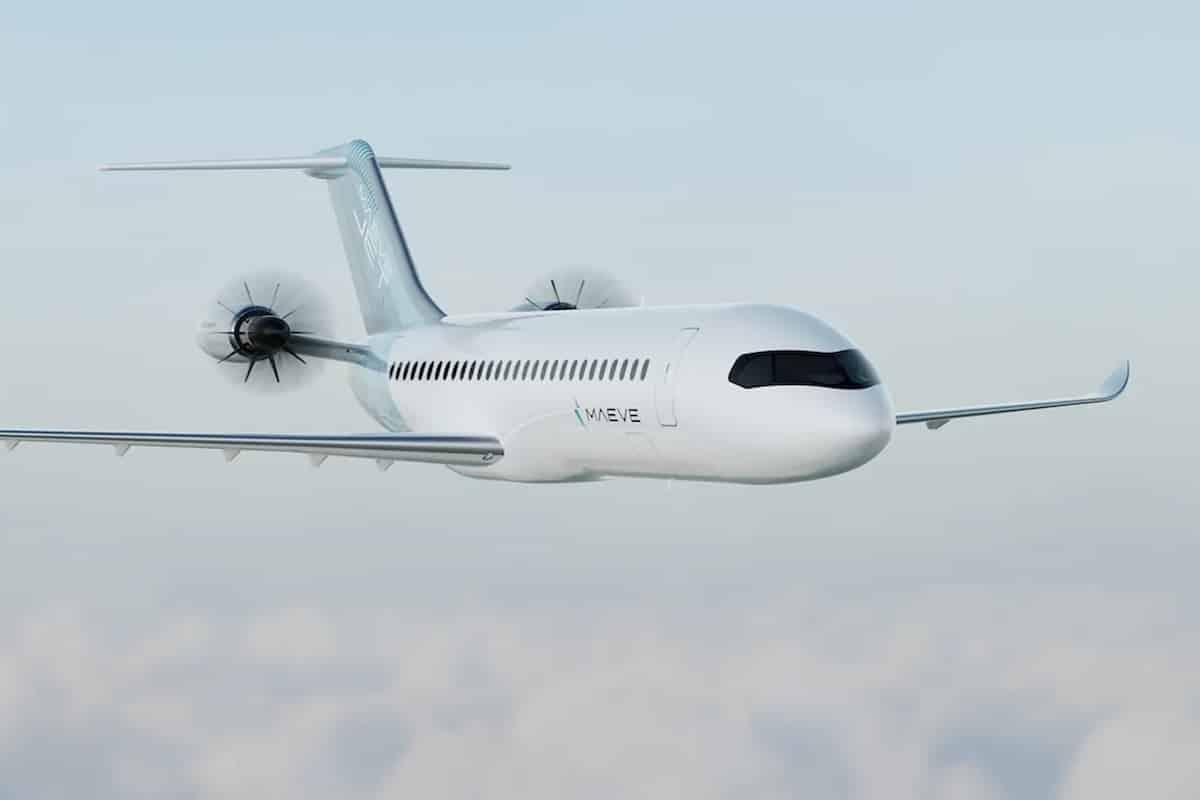Maeve Jet, future hybrid-electric regional aircraft

The Dutch aircraft manufacturer Maeve is developing a regional airplane whose hybrid propulsion promises unprecedented energy frugality.
Regional aviation is at a crossroads. Faced with environmental constraints, regulatory pressures, and rising fuel prices, aging turboprops and small regional jets no longer represent the future. It is precisely in this void that Maeve Aerospace is entering, a young European startup aiming to revolutionize the market with its MJ500, nicknamed the Maeve Jet. A hybrid-electric aircraft seating 76 to 100 passengers that promises up to 40% fewer emissions compared to current airplanes. But behind the technological enthusiasm lies a series of Herculean challenges.
Founded in 2021 in the Netherlands, with a presence also in Germany, Maeve Aerospace aligns with the new companies aiming to electrify aviation. Unlike urban air taxis (eVtol) or battery-electric aircraft limited to 200 km range, Maeve is targeting the regional market from the outset: routes of 500 to 1,500 km, which form the backbone of air traffic in Europe and the United States.

You might be interestedin this article:
With a team comprising engineers from Airbus, Fokker, and Rolls-Royce, Maeve presents itself as a serious outsider. The aircraft manufacturer has already attracted high-profile partners: Pratt & Whitney Canada (RTX) for propulsion, Delta Air Lines for operational support, MHI RJ Aviation Group (formerly Bombardier CRJ) for engineering, and even SkyWest Airlines, a major regional carrier in the US, which has signed on as the launch customer.
MJ500, a “jet” that isn’t really one!
The name is confusing: the Maeve Jet is not a jet in the traditional sense. It is a hybrid-electric aircraft with open-rotor propellers, a technology making a comeback after being sidelined for years due to noise and certification issues.
Its engines, located at the rear of the fuselage, combine a conventional turbine with electric motors powered by batteries and generators.
Its technical specifications on paper are attractive:
• Capacity: 76 to 100 passengers depending on configuration
• Range: up to 2,685 km (1,450 nm) with 76 passengers
• Cruising speed: Mach 0.75 to 0.78
• Takeoff weight: 34 tons
• Runway length: 1,500 m at takeoff
The aircraft is thus positioned in the same category as Embraer E-Jets or De Havilland Dash 8, but promises a significant reduction in fuel consumption. Maeve claims up to 40% fuel savings with kerosene, and a potential 95% reduction in emissions when using SAF (sustainable aviation fuels).

Unlike 100% electric projects, limited by battery energy density, Maeve opts for a compromise solution: hybrid propulsion. The electric motors support the main turbine during the most energy-consuming phases (takeoff, climb), thus reducing consumption and allowing for downsizing of the thermal engine.
However, it has a major drawback: complexity. Hybrid systems require extensive redundancy, sophisticated cooling, and ultra-fine energy management. All of which are vulnerable points for a passenger aircraft.
In service not before 2033?

For now, the MJ500 remains at the concept stage. Maeve forecasts its first flight around 2029, with entry into service in the early 2030s. An optimistic schedule. Even established players like Airbus, with their hydrogen projects, are targeting 2035. Moreover, the supply chain still needs to be built from scratch: factory, certification, maintenance, funding…
Funding is a particularly challenging issue. Developing a commercial aircraft costs billions of euros or dollars. Maeve has already raised a few tens of millions, but convincing solid investors to take off will be essential.
The sky of aviation is filled with abandoned projects. Let’s hope Maeve’s takes flight one day.
This page is translated from the original post "Maeve Jet, futur avion régional hybride électrique… et à hélices" in French.
We also suggestthese articles:
Also read






